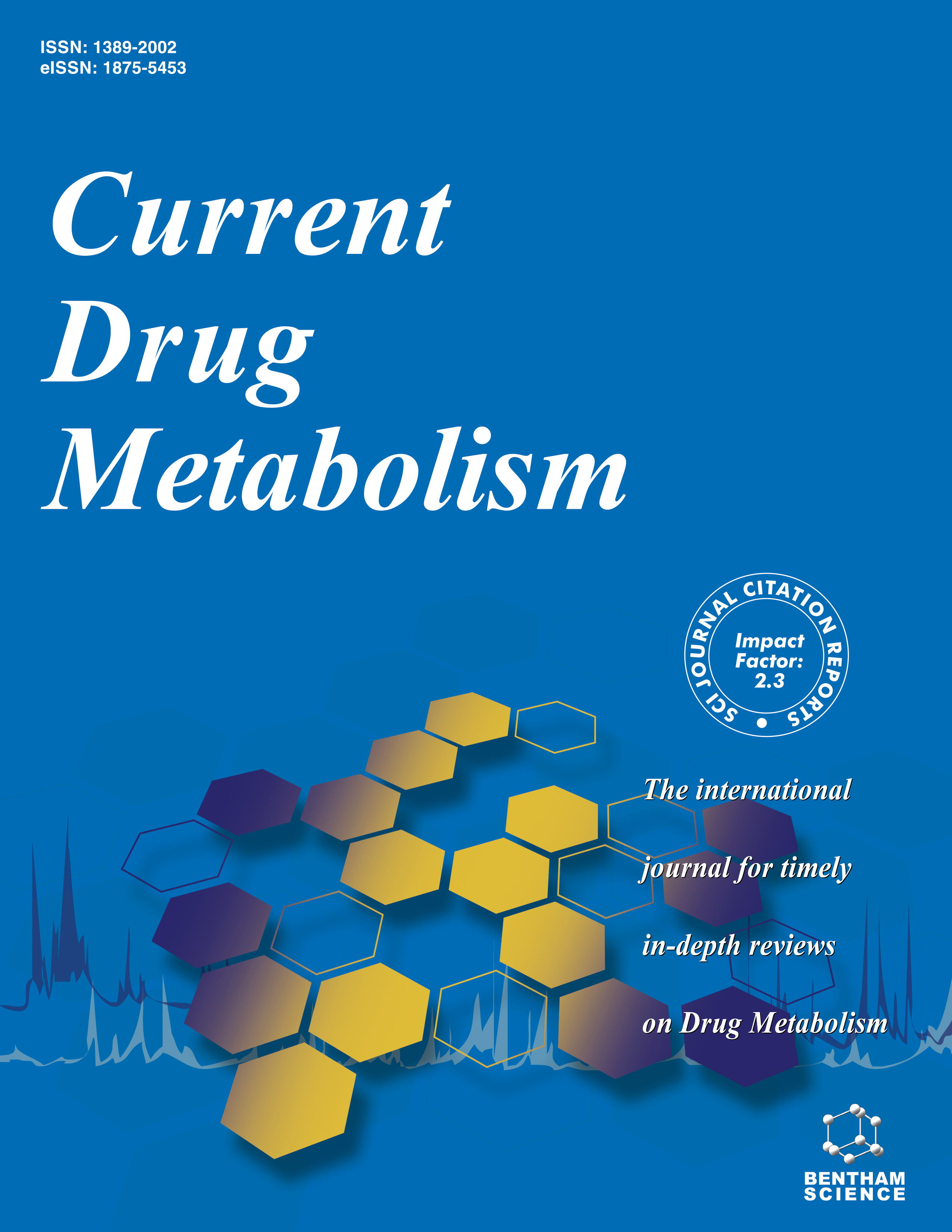- Home
- A-Z Publications
- Current Drug Metabolism
- Previous Issues
- Volume 23, Issue 3, 2022
Current Drug Metabolism - Volume 23, Issue 3, 2022
Volume 23, Issue 3, 2022
-
-
Insights into Interactions of Human Cytochrome P450 17A1: A Review
More LessAuthors: Himanshu Singh, Rajnish Kumar, Avijit Mazumder, Salahuddin, Rupa Mazumder and Mohd. M. AbdullahCytochrome P450s are a widespread and vast superfamily of hemeprotein monooxygenases that metabolize physiologically essential chemicals necessary for most species' survival, ranging from protists to plants to humans. They catalyze the synthesis of steroid hormones, cholesterol, bile acids, and arachidonate metabolites and the degradation of endogenous compounds, such as steroids, fatty acids, and other catabolizin Read More
-
-
-
A Comprehensive Review of the Pharmacologic Perspective on Loop Diuretic Drug Interactions with Therapeutically Used Drugs
More LessAuthors: Naina M. P. Maideen, Rajkapoor Balasubramanian and Sudha MuthusamyBackground: Loop diuretics help to manage the patients with edema associated with congestive heart failure, liver cirrhosis, and renal disease and hypertension. The patients taking loop diuretics may receive other medications to treat comorbidities leading to drug interactions. Methods: The literature was searched in databases such as Medline/PMC/PubMed, Google Scholar, Cochrane Library, Science Direct, EMBASE, Web of Read More
-
-
-
Therapeutic Approaches to Amyotrophic Lateral Sclerosis from the Lab to the Clinic
More LessAmyotrophic Lateral Sclerosis (ALS) is a terminal neuro-degenerative disorder that is clinically recognized as a gradual degeneration of the upper and lower motor neurons, with an average duration of 3 to 5 years from initial of symptoms to death. The mechanisms underlying the pathogenesis and progression of the disease are multifactorial. Therefore, to find effective treatments, it is necessary to understand the heterogeneit Read More
-
-
-
Elevated Urinary Tissue Inhibitor of Metalloproteinase-2 and Insulin-Like Growth Factor Binding Protein-7 Predict Drug-Induced Acute Kidney Injury
More LessBackground: Urinary tissue inhibitor of metalloproteinase-2 (TIMP2) and insulin-like growth factor binding protein-7 (IGFBP7) predict severe acute kidney injury (AKI) in critical illness. Earlier but subtle elevation of either biomarker from nephrotoxicity may predict drug-induced AKI. Methods: A prospective study involving serial urine collection in patients treated with vancomycin, aminoglycosides, amphotericin, foscarnet, or calc Read More
-
-
-
Impact of POR*28 Variant on Tacrolimus Pharmacokinetics in Kidney Transplant Patients with Different CYP3A5 Genotypes
More LessBackground: The introduction of tacrolimus (TAC) to clinical practice was essential to the establishment of transplantation as a therapy for patients with chronic renal disease. However, the higher interindividual variation of TAC metabolism has been an important limiting factor for its clinical use. Although the relationship between CYP3A5 polymorphisms and TAC pharmacokinetics (PK) is well established, the effects of other geneti Read More
-
-
-
Evaluation of Alterations in DNA Methylation of CYP3A4 Gene Upstream Regulatory Elements in Gastric Cancer and in Response to Diazinon Treatment
More LessBackground: Little is known about cytochrome P450 3A4 (CYP3A4) DNA methylation and transcription alterations in gastric cancer. Objective: In this paper, we initially aimed to address the effect of diazinon pesticide on DNA methylation and transcription changes of the CYP3A4 gene in a human gastric cell line. In the next step, we studied the methylation differences of CpG sites within the upstream regulatory regions of the CYP3 Read More
-
Volumes & issues
-
Volume 25 (2024)
-
Volume 24 (2023)
-
Volume 23 (2022)
-
Volume 22 (2021)
-
Volume 21 (2020)
-
Volume 20 (2019)
-
Volume 19 (2018)
-
Volume 18 (2017)
-
Volume 17 (2016)
-
Volume 16 (2015)
-
Volume 15 (2014)
-
Volume 14 (2013)
-
Volume 13 (2012)
-
Volume 12 (2011)
-
Volume 11 (2010)
-
Volume 10 (2009)
-
Volume 9 (2008)
-
Volume 8 (2007)
-
Volume 7 (2006)
-
Volume 6 (2005)
-
Volume 5 (2004)
-
Volume 4 (2003)
-
Volume 3 (2002)
-
Volume 2 (2001)
-
Volume 1 (2000)
Most Read This Month
Article
content/journals/cdm
Journal
10
5
false
en


